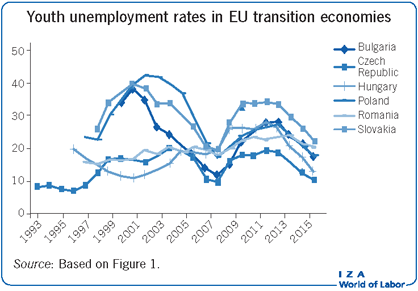Elevator pitch
The 2008 financial crisis and subsequent Great Recession created a second major employment shock in less than a generation in several transition economies. In particular, youth unemployment rates, which are usually higher than adult rates in normal times, reached extremely high levels and partly tended to persist over time. Improving youth labor market performance should therefore be a top priority for policymakers in affected transition countries. Better understanding of the dynamics of national and regional youth unemployment rates and other associated indicators is particularly important for designing effective policy approaches.

Key findings
Pros
Youth unemployment rates are two or three times the adult rates, though with marked differences across transition countries.
Recessions and crises strongly deteriorate youth employment opportunities, much more so than for adults.
In contrast to planned economies, transition and market economies have much higher and unstable unemployment rates, especially when it comes to youth unemployment.
Cons
Research on the determinants of national and regional dynamics of youth unemployment is very limited, especially for transition economies.
The unemployment rate is only one of several key indicators to cosider when measuring youth labor market performance.
Substantial variation in youth unemployment rates exists both within and across countries, making it difficult to prescribe a “one size fits all” policy response.